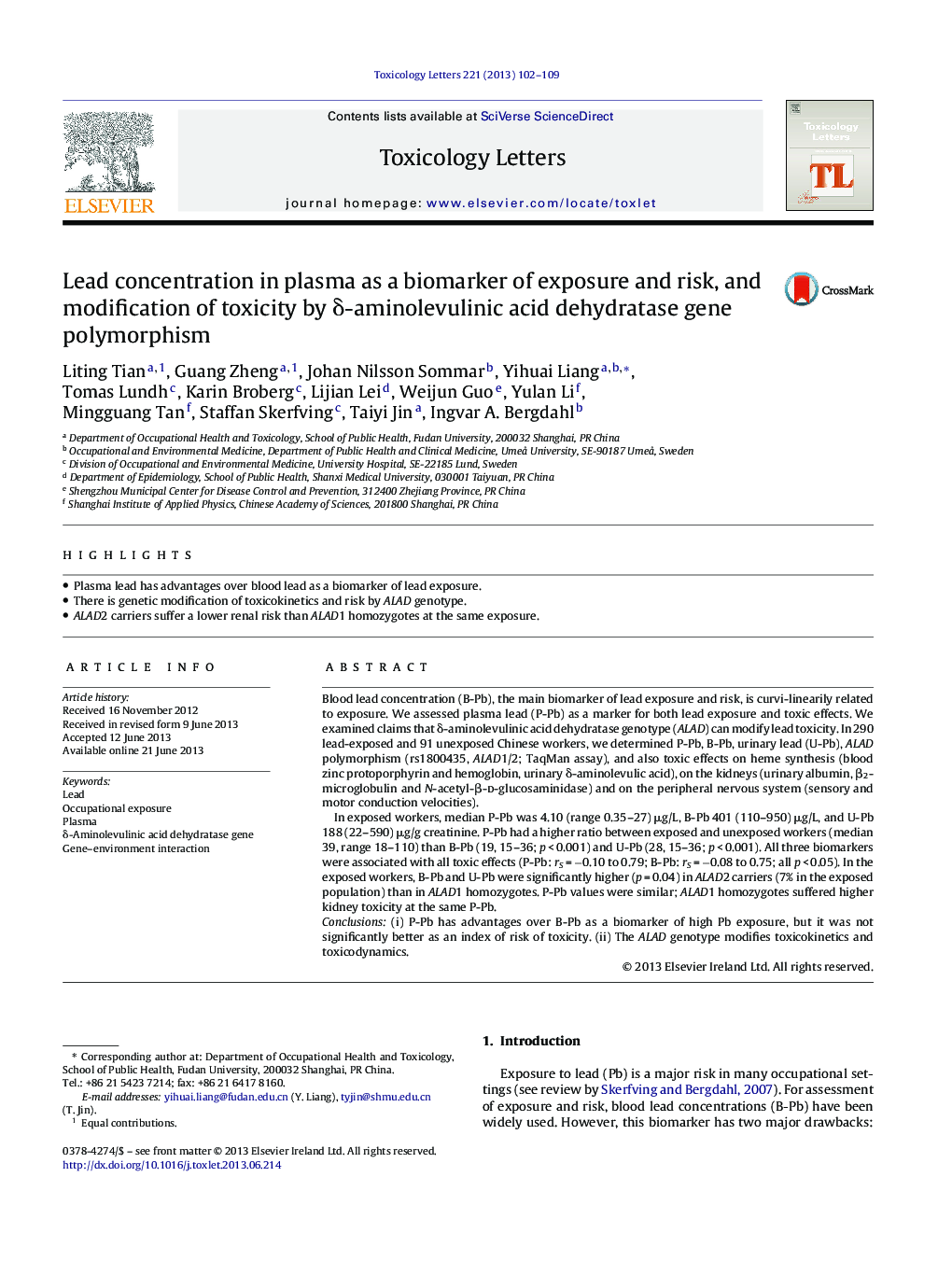| کد مقاله | کد نشریه | سال انتشار | مقاله انگلیسی | نسخه تمام متن |
|---|---|---|---|---|
| 2599209 | 1133196 | 2013 | 8 صفحه PDF | دانلود رایگان |

• Plasma lead has advantages over blood lead as a biomarker of lead exposure.
• There is genetic modification of toxicokinetics and risk by ALAD genotype.
• ALAD2 carriers suffer a lower renal risk than ALAD1 homozygotes at the same exposure.
Blood lead concentration (B-Pb), the main biomarker of lead exposure and risk, is curvi-linearily related to exposure. We assessed plasma lead (P-Pb) as a marker for both lead exposure and toxic effects. We examined claims that δ-aminolevulinic acid dehydratase genotype (ALAD) can modify lead toxicity. In 290 lead-exposed and 91 unexposed Chinese workers, we determined P-Pb, B-Pb, urinary lead (U-Pb), ALAD polymorphism (rs1800435, ALAD1/2; TaqMan assay), and also toxic effects on heme synthesis (blood zinc protoporphyrin and hemoglobin, urinary δ-aminolevulic acid), on the kidneys (urinary albumin, β2-microglobulin and N-acetyl-β-d-glucosaminidase) and on the peripheral nervous system (sensory and motor conduction velocities).In exposed workers, median P-Pb was 4.10 (range 0.35–27) μg/L, B-Pb 401 (110–950) μg/L, and U-Pb 188 (22–590) μg/g creatinine. P-Pb had a higher ratio between exposed and unexposed workers (median 39, range 18–110) than B-Pb (19, 15–36; p < 0.001) and U-Pb (28, 15–36; p < 0.001). All three biomarkers were associated with all toxic effects (P-Pb: rS = −0.10 to 0.79; B-Pb: rS = −0.08 to 0.75; all p < 0.05). In the exposed workers, B-Pb and U-Pb were significantly higher (p = 0.04) in ALAD2 carriers (7% in the exposed population) than in ALAD1 homozygotes. P-Pb values were similar; ALAD1 homozygotes suffered higher kidney toxicity at the same P-Pb.Conclusions(i) P-Pb has advantages over B-Pb as a biomarker of high Pb exposure, but it was not significantly better as an index of risk of toxicity. (ii) The ALAD genotype modifies toxicokinetics and toxicodynamics.
Journal: Toxicology Letters - Volume 221, Issue 2, 14 August 2013, Pages 102–109